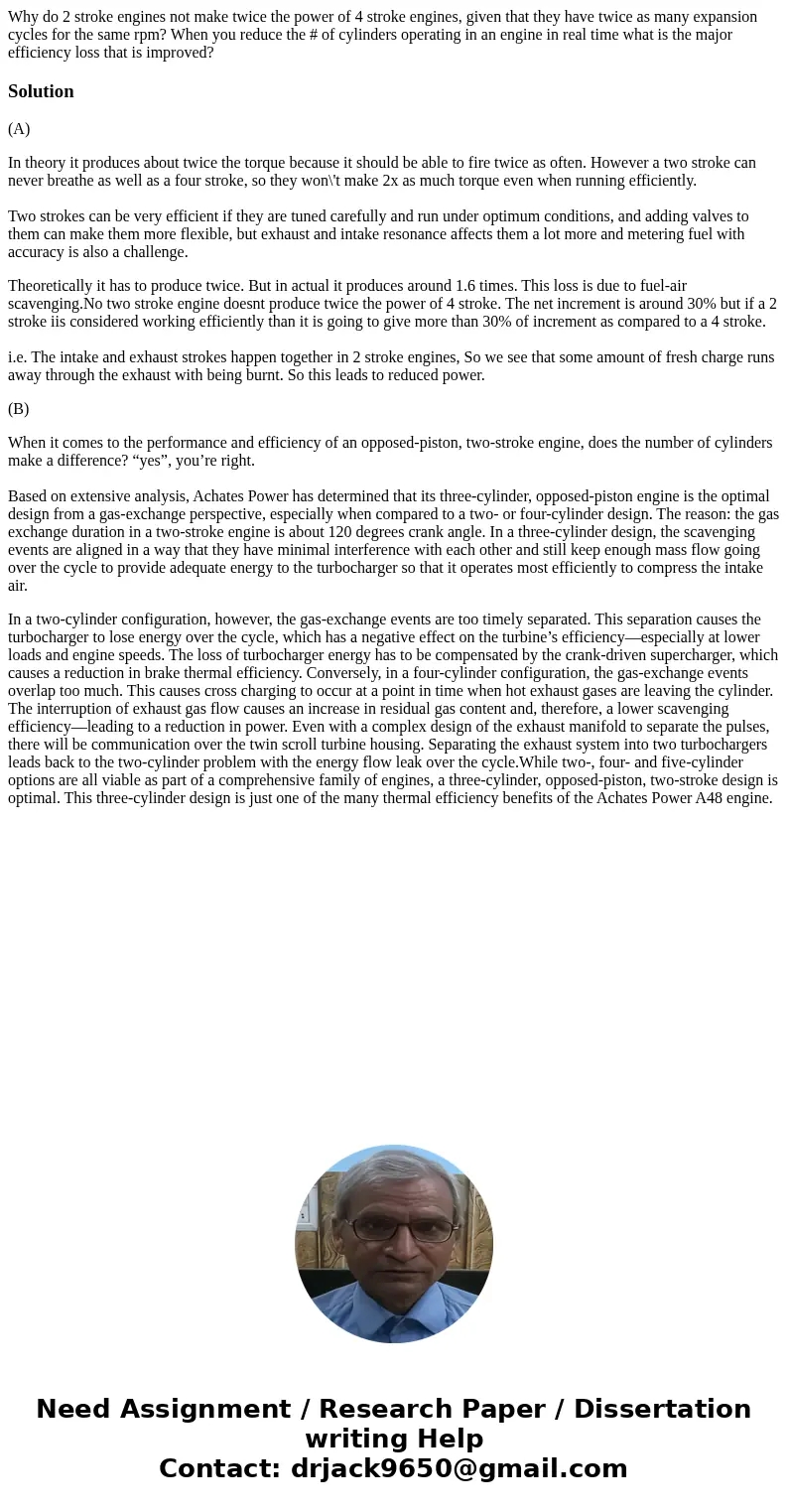Why do 2 stroke engines not make twice the power of 4 stroke
Solution
(A)
In theory it produces about twice the torque because it should be able to fire twice as often. However a two stroke can never breathe as well as a four stroke, so they won\'t make 2x as much torque even when running efficiently.
Two strokes can be very efficient if they are tuned carefully and run under optimum conditions, and adding valves to them can make them more flexible, but exhaust and intake resonance affects them a lot more and metering fuel with accuracy is also a challenge.
Theoretically it has to produce twice. But in actual it produces around 1.6 times. This loss is due to fuel-air scavenging.No two stroke engine doesnt produce twice the power of 4 stroke. The net increment is around 30% but if a 2 stroke iis considered working efficiently than it is going to give more than 30% of increment as compared to a 4 stroke.
i.e. The intake and exhaust strokes happen together in 2 stroke engines, So we see that some amount of fresh charge runs away through the exhaust with being burnt. So this leads to reduced power.
(B)
When it comes to the performance and efficiency of an opposed-piston, two-stroke engine, does the number of cylinders make a difference? “yes”, you’re right.
Based on extensive analysis, Achates Power has determined that its three-cylinder, opposed-piston engine is the optimal design from a gas-exchange perspective, especially when compared to a two- or four-cylinder design. The reason: the gas exchange duration in a two-stroke engine is about 120 degrees crank angle. In a three-cylinder design, the scavenging events are aligned in a way that they have minimal interference with each other and still keep enough mass flow going over the cycle to provide adequate energy to the turbocharger so that it operates most efficiently to compress the intake air.
In a two-cylinder configuration, however, the gas-exchange events are too timely separated. This separation causes the turbocharger to lose energy over the cycle, which has a negative effect on the turbine’s efficiency—especially at lower loads and engine speeds. The loss of turbocharger energy has to be compensated by the crank-driven supercharger, which causes a reduction in brake thermal efficiency. Conversely, in a four-cylinder configuration, the gas-exchange events overlap too much. This causes cross charging to occur at a point in time when hot exhaust gases are leaving the cylinder. The interruption of exhaust gas flow causes an increase in residual gas content and, therefore, a lower scavenging efficiency—leading to a reduction in power. Even with a complex design of the exhaust manifold to separate the pulses, there will be communication over the twin scroll turbine housing. Separating the exhaust system into two turbochargers leads back to the two-cylinder problem with the energy flow leak over the cycle.While two-, four- and five-cylinder options are all viable as part of a comprehensive family of engines, a three-cylinder, opposed-piston, two-stroke design is optimal. This three-cylinder design is just one of the many thermal efficiency benefits of the Achates Power A48 engine.

 Homework Sourse
Homework Sourse